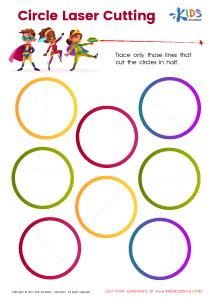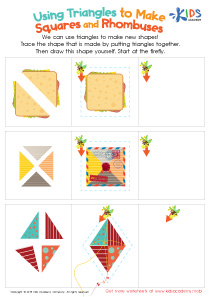Problem-Solving Skills Normal 2D Shapes Worksheets for Ages 4-8
5 filtered results
-
From - To
Enhance your child's problem-solving skills with our engaging 2D shapes worksheets designed for ages 4-8! These fun-filled activities introduce children to various normal 2D shapes while challenging them to think critically and creatively. Each worksheet encourages young learners to identify, analyze, and manipulate shapes, fostering essential mathematical thinking. Designed by educators, these resources are perfect for both home and classroom use, ensuring an interactive learning experience. Watch as your child develops confidence in their capabilities while mastering essential shape concepts. Explore our collection today and nurture a lifelong love for learning and problem-solving in your little ones!
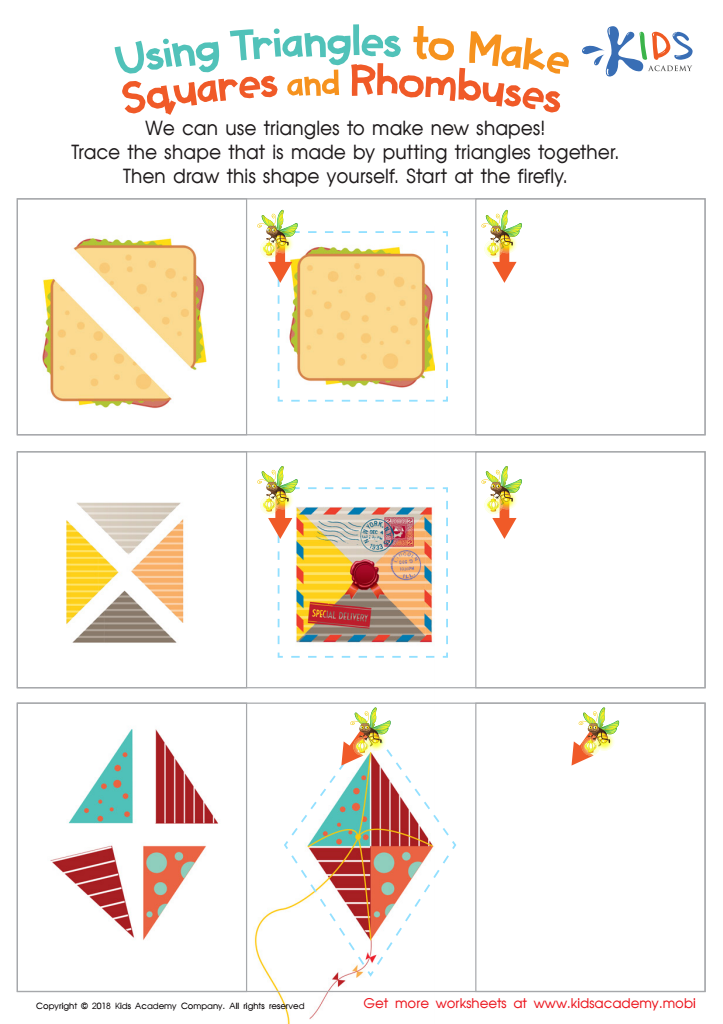

Using Triangles to Make Squares and Rhombuses Worksheet
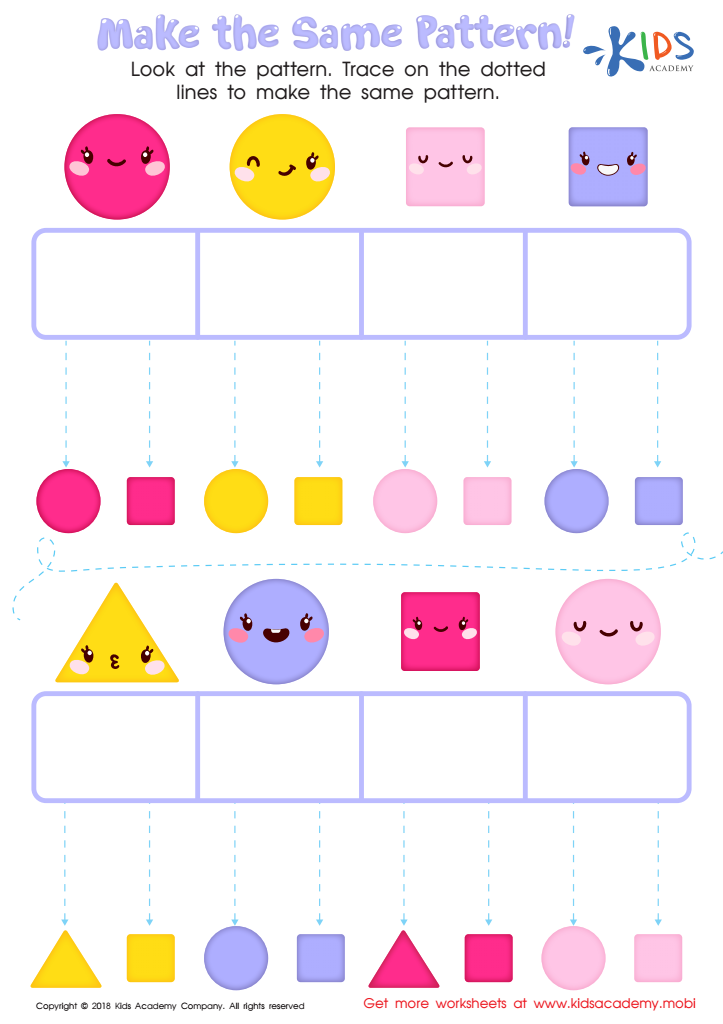

Make the Same Pattern Worksheet
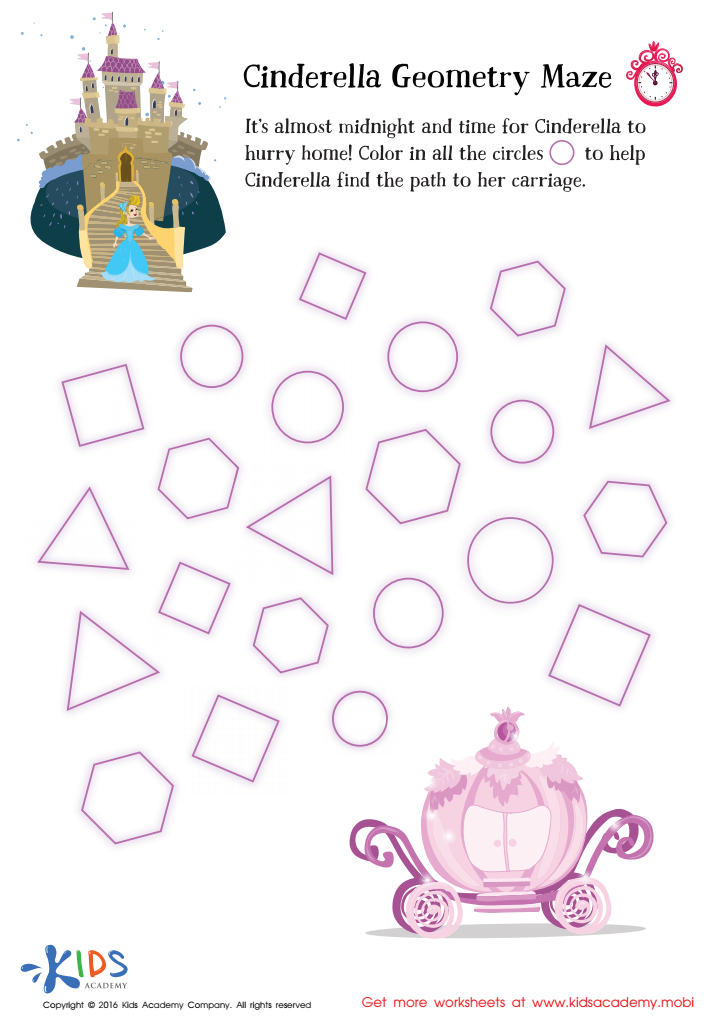

Cinderella Geometry Maze Worksheet


Learning to Draw Crescents And Triangles Worksheet
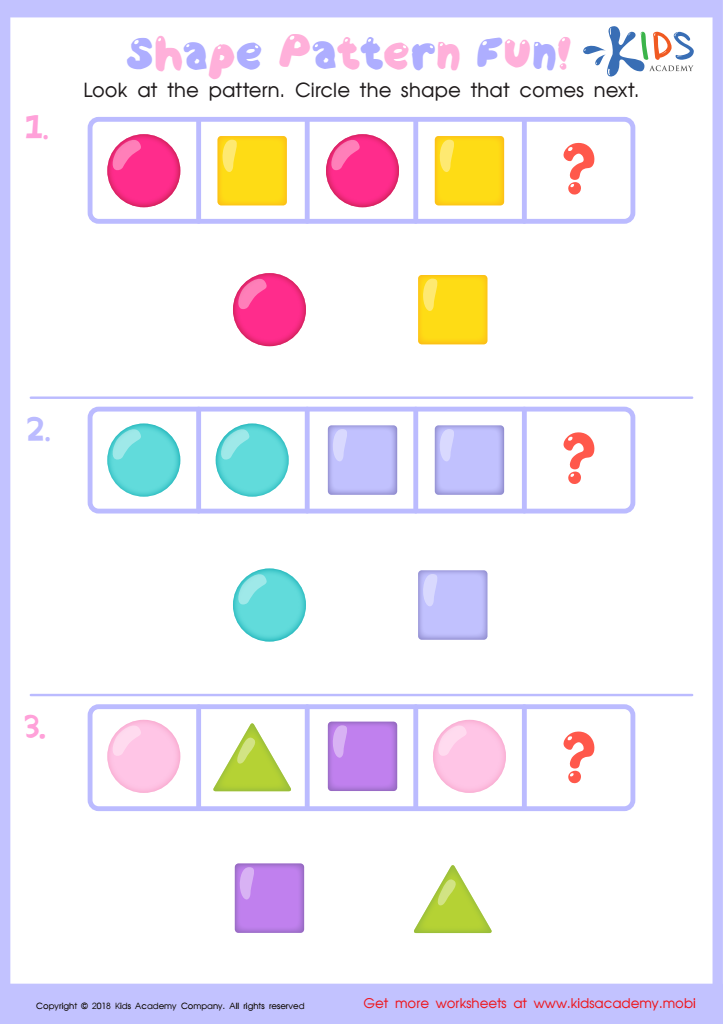

Shape Pattern Fun Worksheet
Parents and teachers should prioritize problem-solving skills related to normal 2D shapes for children aged 4-8 because these foundational skills contribute significantly to cognitive development. At this age, children are developing critical thinking abilities and enhancing their understanding of spatial relationships. Mastering shapes not only aids in mathematical readiness but also enriches everyday life experiences.
Engaging with 2D shapes fosters a child’s ability to analyze, categorize, and synthesize information. It encourages them to think logically, enhance their attention to detail, and work persistently to find solutions. For instance, when children manipulate various shapes during hands-on activities, they practice fine motor skills and boost coordination. Furthermore, understanding 2D shapes enriches language development, as children learn to articulate concepts and describe their surroundings using geometric terminology.
Problem-solving tasks involving stability, balance, and symmetry, encourage teamwork and communication when children collaborate with peers or family members. In our increasingly visual world, being comfortable with shapes lays the groundwork for more complex subjects like geometry, art, and engineering later on. Therefore, emphasizing problem-solving with 2D shapes nurtures well-rounded skill sets that empower children to become critical thinkers and confident learners.
 Assign to My Students
Assign to My Students













